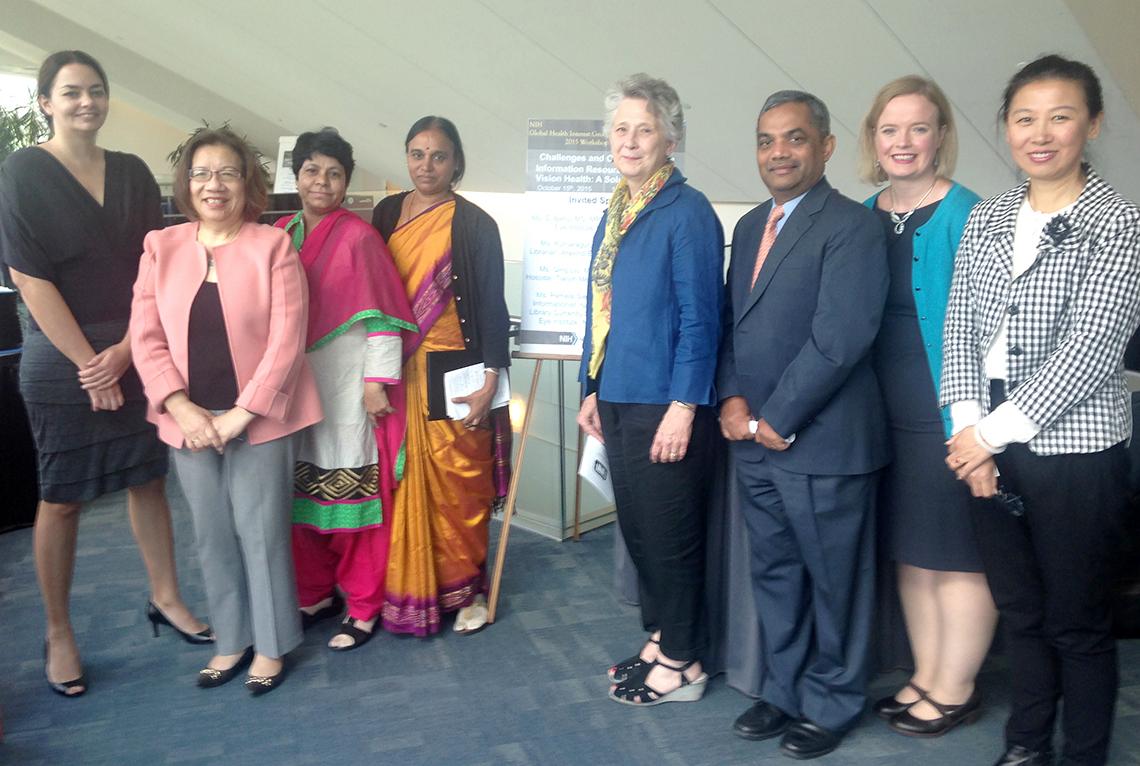West Links Environmental Change to Eye Health Hazards

Another reason to worry about climate change: Expanding areas of arid land, air pollution and greater exposure to ultraviolet (UV) radiation all present potential health hazards to your eyes, according to Dr. Sheila West, vice chair for research at the Wilmer Eye Institute, Johns Hopkins University. She recently discussed these hazards at a symposium on the health consequences of climate change.
The tissues at the front of the eye—the cornea, eyelid, the white part called the sclera and even the lens—are all exposed to the environment. Adverse environmental changes may therefore have deleterious effects on the eye, West said at the symposium, sponsored by the NIH global health interest group.
Regions of arid land are expanding as rising temperatures and shifting atmospheric circulation patterns force dry air into regions that had previously seen more rain. Drier air means that more people may be likely to suffer from dry eye symptoms, in which tears aren’t produced properly or evaporate too quickly.
While there’s no evidence that drier conditions cause dry eye, “it can accelerate symptoms in people who are prone to dry eye. As we see these areas [of drought] spread, we are liable to see people who are prone to dry eye, but who may not be symptomatic, go on to develop symptoms,” West said.
In the U.S., about $3.8 billion is spent annually treating dry eye. Those expenditures are likely to increase as the areas with rising temperatures and increasingly arid conditions expand.
Another consequence of climate change is an increased burden of airborne particles that can irritate the eye. Air pollution has long been linked to respiratory disorders; more recently it’s been shown to play a role in eye disease, West said. Drought conditions, now increasingly seen as a consequence of climate change, can prolong the fire season from naturally occurring fires, which emit irritants into the air. As an example of how these fire emissions affect the eye, West pointed to the use of intentional fires set for crop clearing. “We’re seeing more ocular exposure to irritants in the air in these farmland areas,” she said.
West‘s own research has shown that exposure to wood or charcoal cooking fires—ubiquitous in many developing countries—appears to accelerate the scarring caused by trachoma, the leading infectious cause of blindness worldwide. Trachoma is caused by the bacterium Chlamydia trachomatis, which is spread through direct contact with an infected eye, or to nasal fluids. Recurrent infections over a lifetime lead to scarring inside of the eyelids, which in turn causes the eyelashes to turn inward and brush against the cornea, eventually resulting in damage that impairs vision.
By studying women living in areas of rural Africa where trachoma is endemic, West found that, after adjusting for other factors that may contribute to trachoma scarring, the more time the women spent cooking over wood-burning stoves, the more likely they were to have moderate to severe scarring of the eyelid.
On another front, ozone depletion can lead to higher levels of UV light exposure, which is a known risk factor for cortical cataract. Chronic exposure to the sun’s damaging rays can alter the orderly arrangement of proteins in the lens of the eye or damage lens epithelium, causing the lens to become cloudy.
Efforts such as the Montreal Protocol, an international treaty aimed at phasing out the production of ozone-depleting substances, may help reduce UV levels, “but that may not occur until the middle of the century,” West said. Even with the protocol’s measures, West and her colleagues estimated that by 2050, rising UV exposure will lead to an additional 150,000 to 200,000 cases of cataract—over and above the expected number associated with aging. West estimates that $1.1 billion will be spent on care and surgical treatment of these additional cases.
The good news is that these estimates are based on assumptions of how much UV radiation actually reaches the lens of the eye, a controllable risk factor. Wearing a hat can reduce UV exposure by 30 percent. Sunglasses, even simple plastic lenses that offer full UV protection, can reduce exposure by nearly 100 percent.
To watch a video interview with West go to https://www.youtube.com/watch?v=biCNYpOxPNY.

